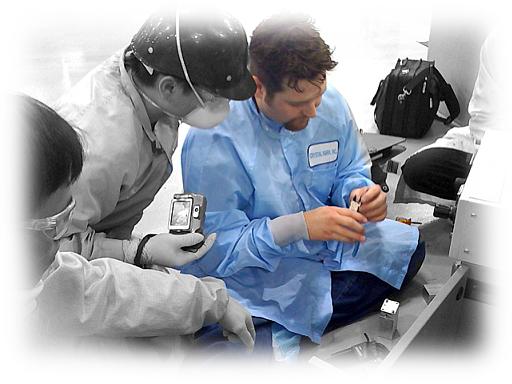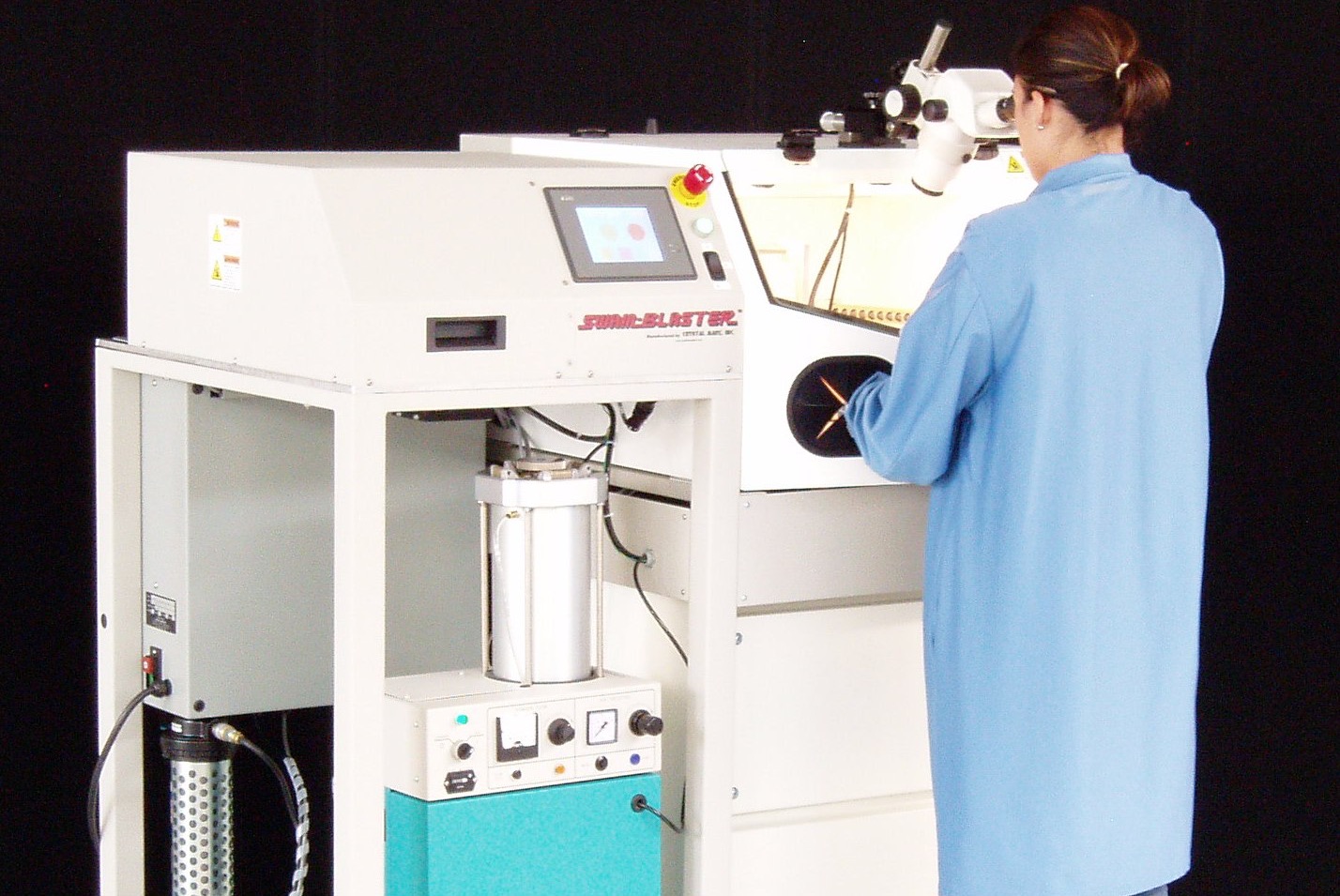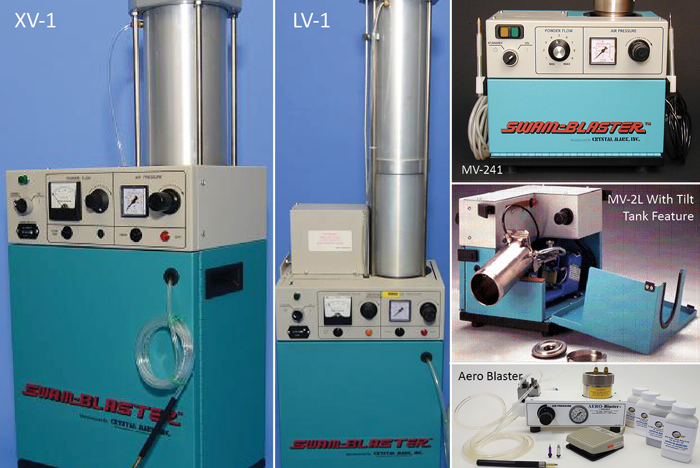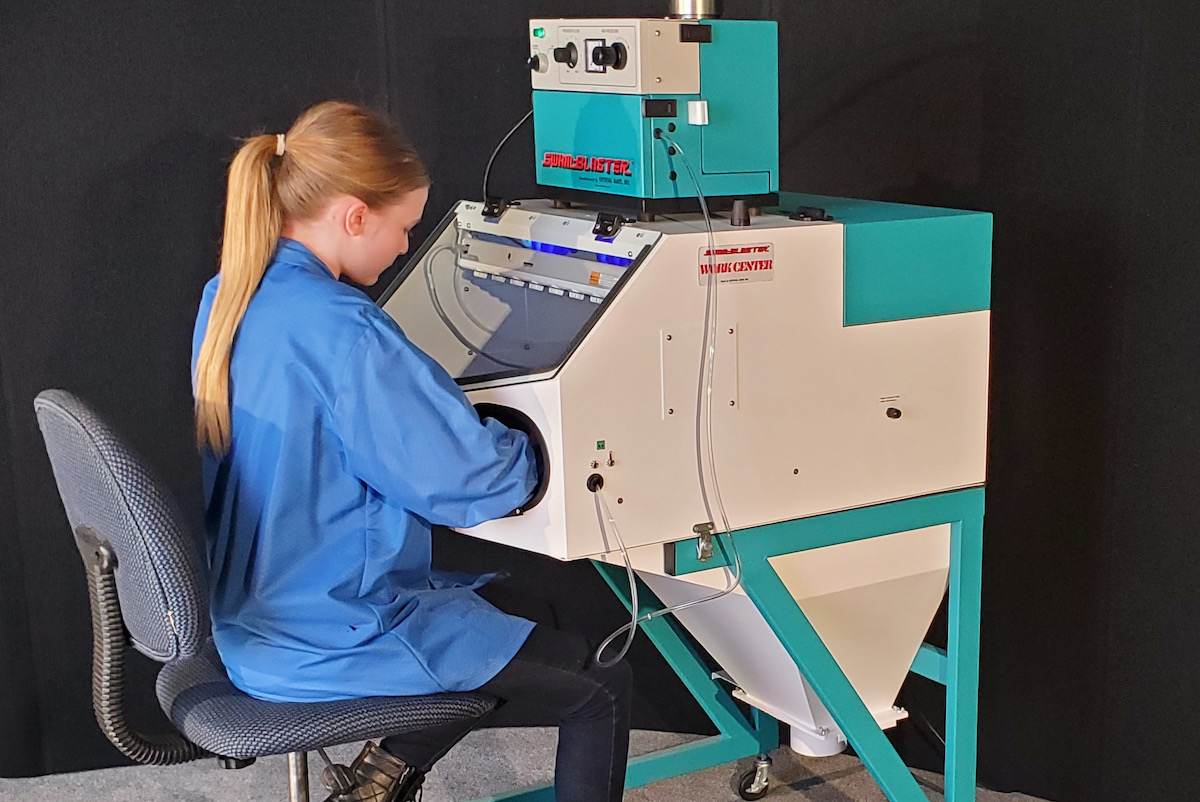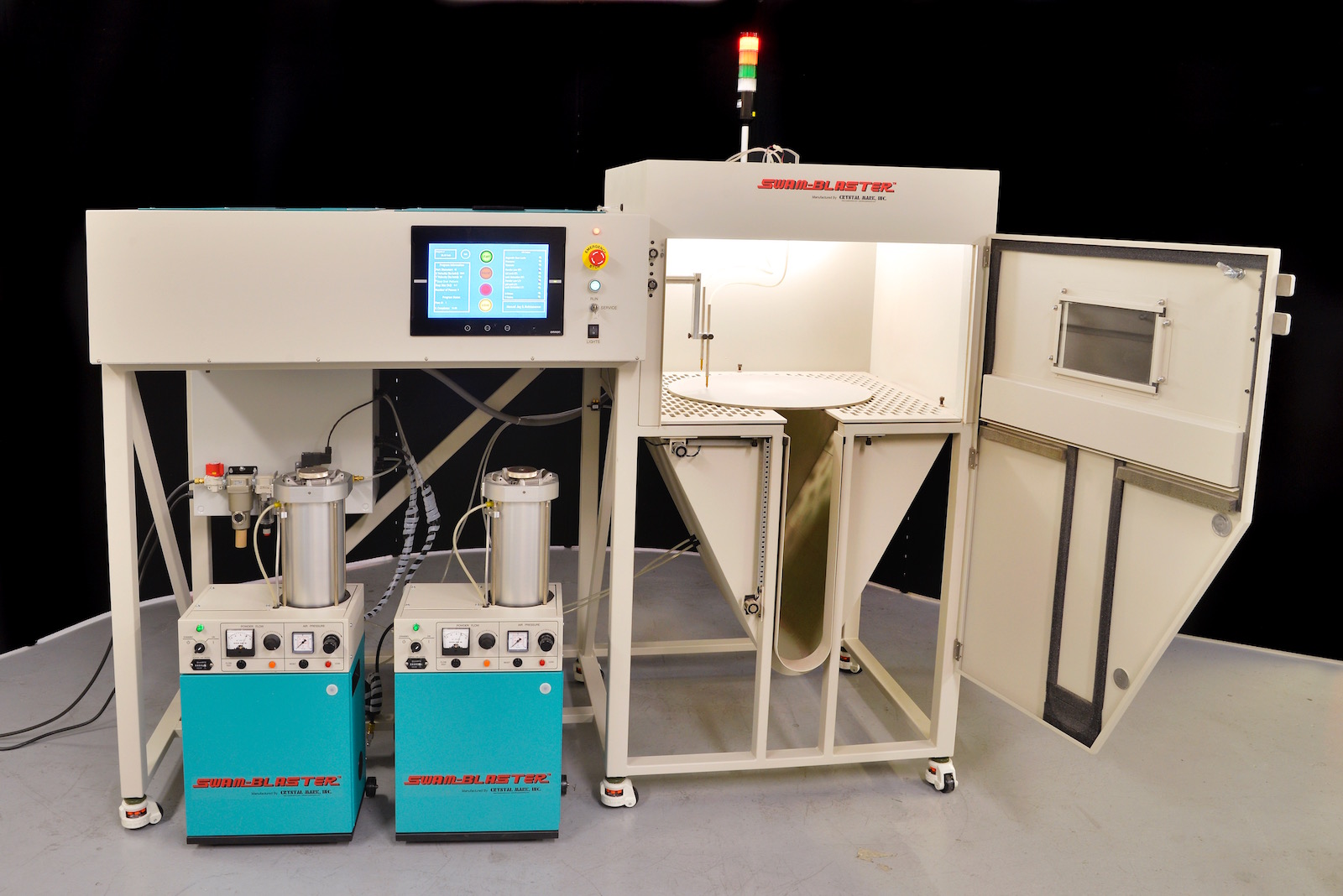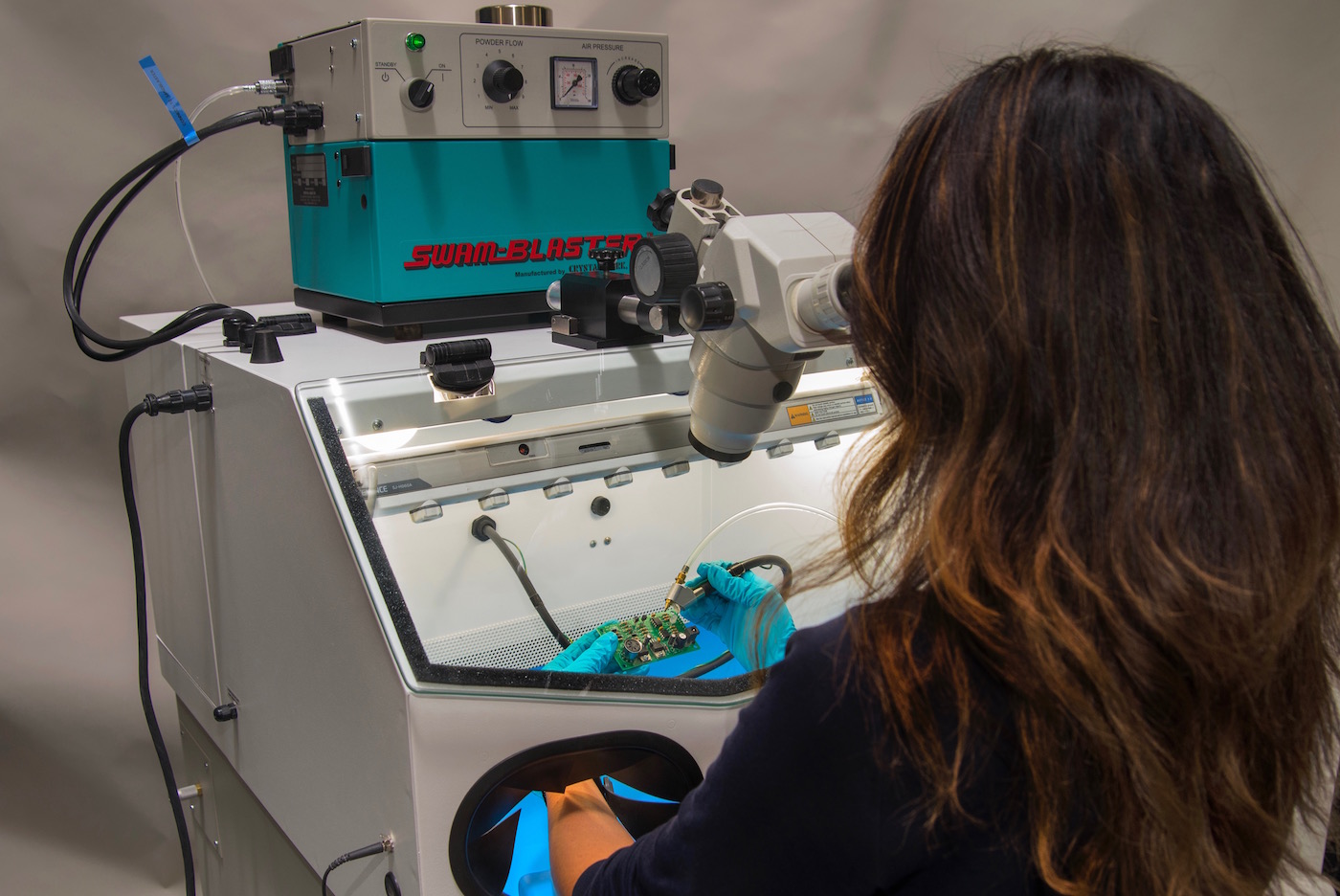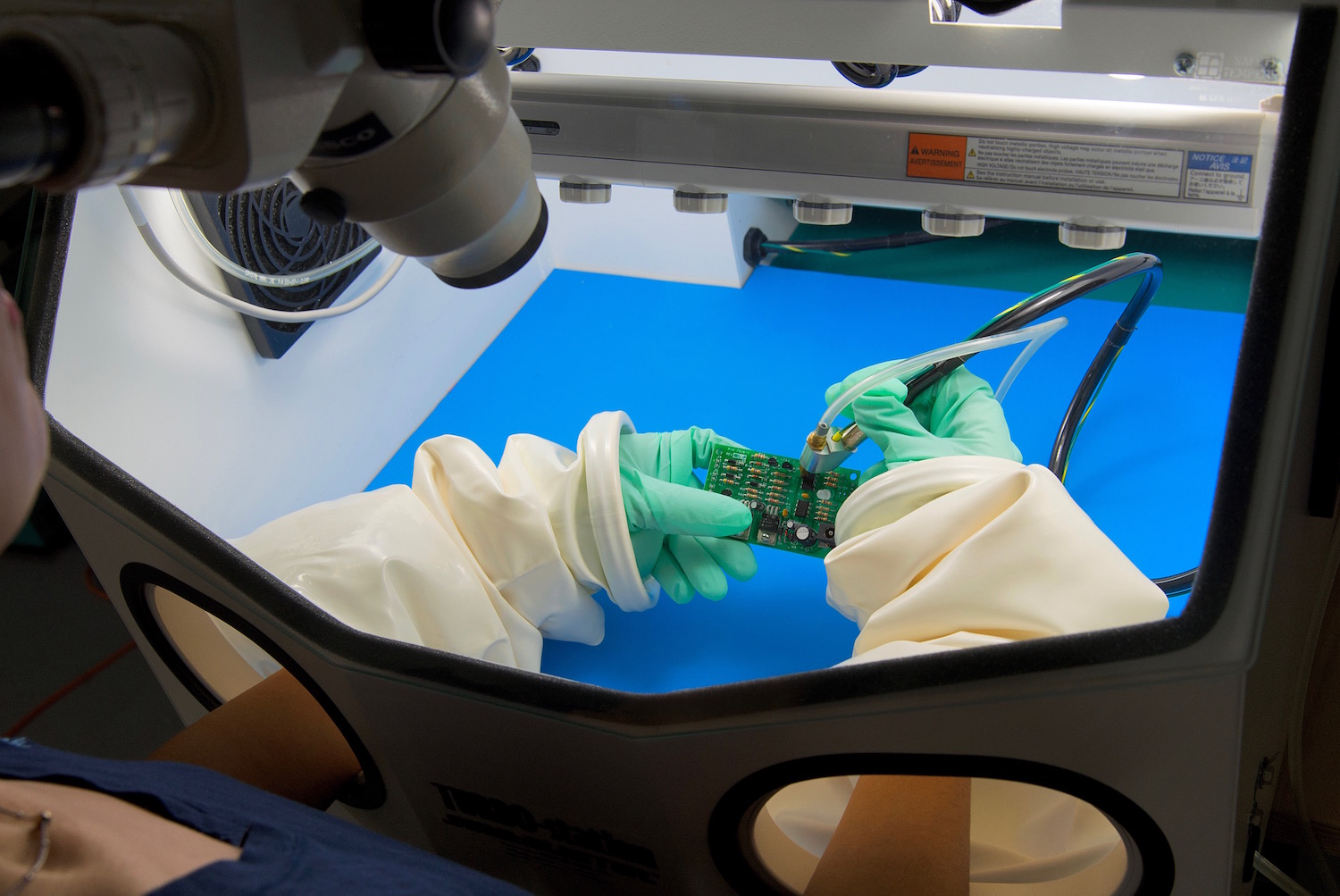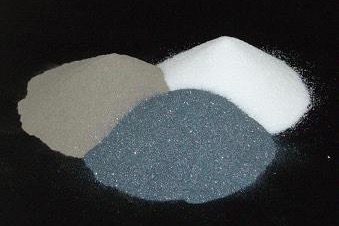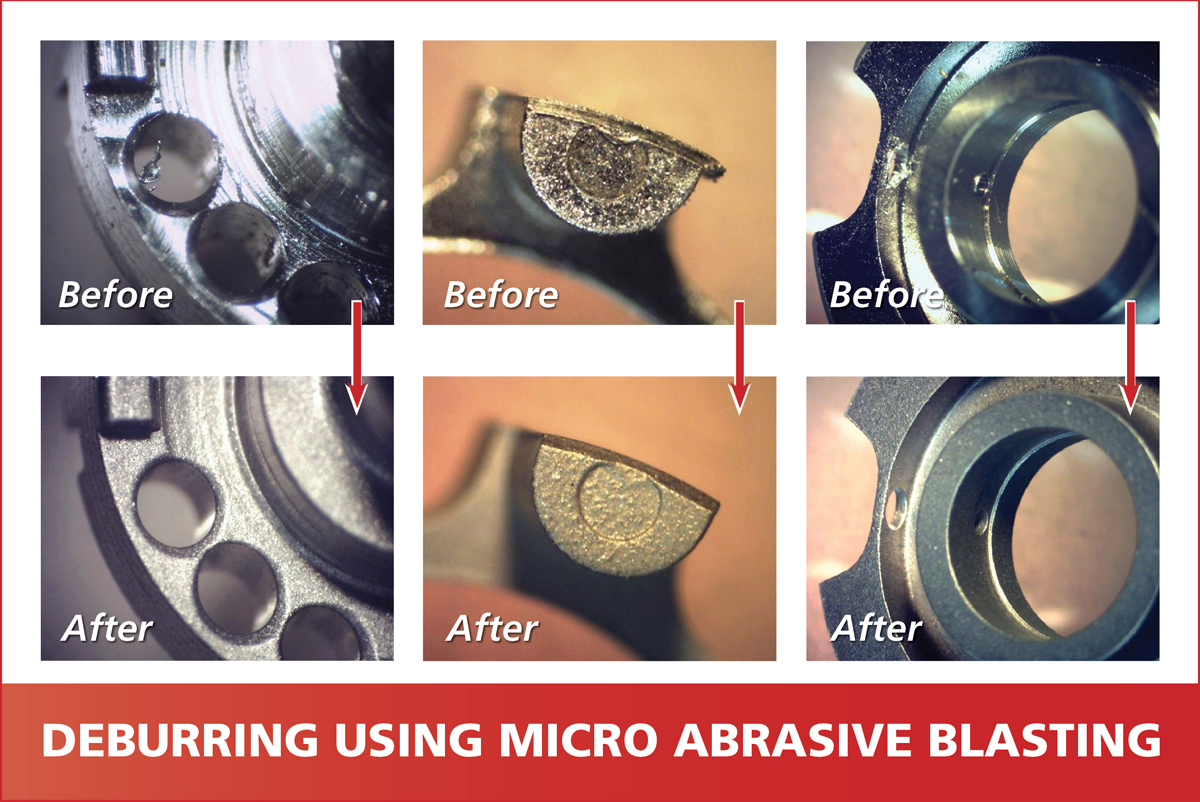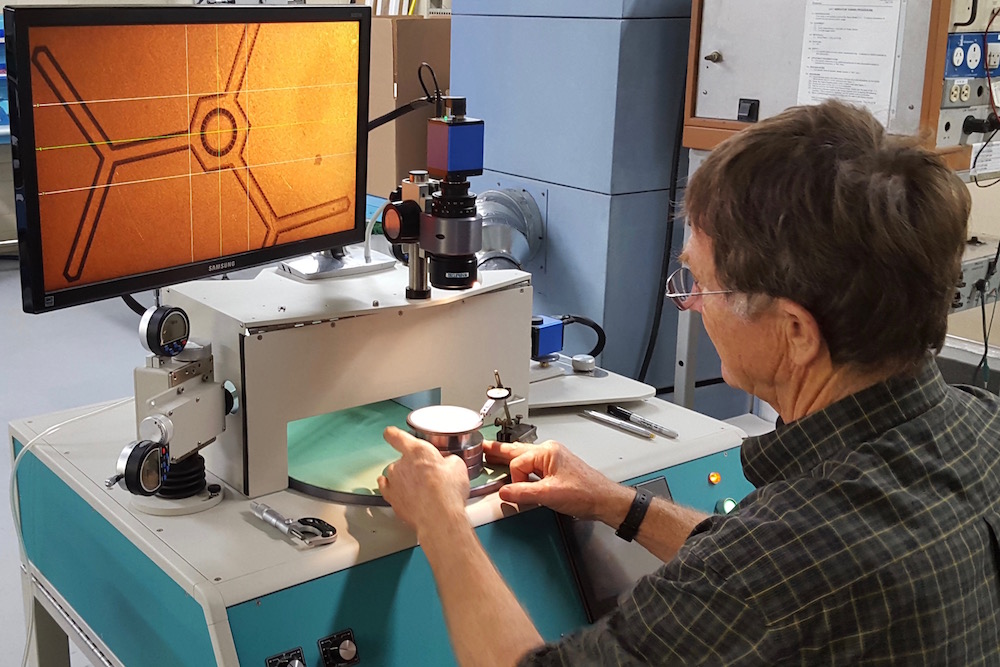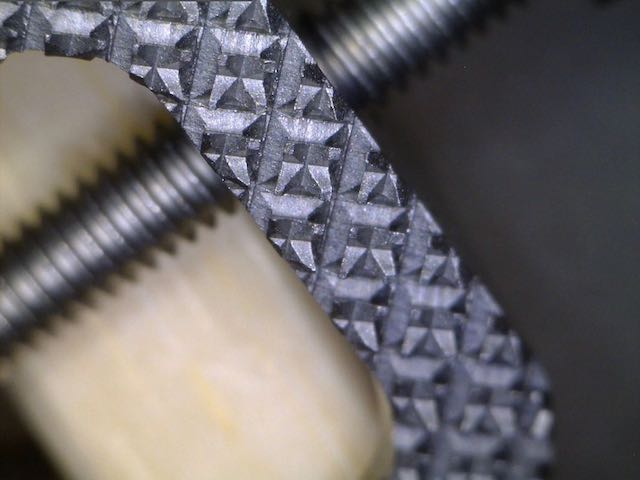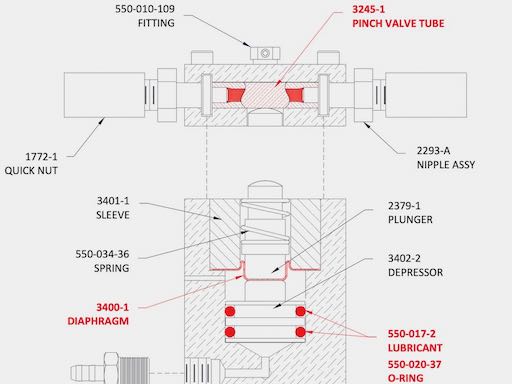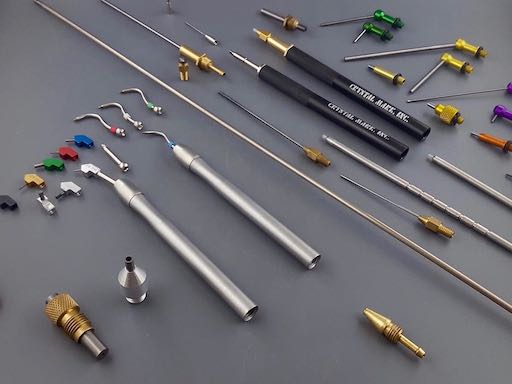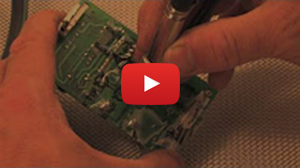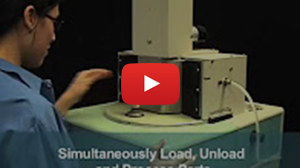What makes Crystal Mark’s Micro Abrasive Processing so effective?
ONE: Complete Process Control:
Crystal Mark’s SWAM BLASTER® Micro Sandblasters offer adjustable air pressure regulation independent of the powder flow regulation. With the vibratory feed system, SWAM Blasters can handle a much more comprehensive range of abrasives types and size compared to any other competitors.
TWO: Unparalleled Performance, Possibilities:
- Crystal Mark used a vibration-based feed system for abrasives. This allows for a much wider range of abrasive particle sizes and air/gas pressure. The technology allows for abrasive particles as coarse as 500 microns, or as fine as the sub-micron level.
- For precision in working with sensitive substrates or applications, Crystal Mark micro abrasive equipment is capable of effectively feeding abrasive or other materials at very low pressures, under 1 psi.
- For aggressive applications, it is possible to feed abrasives at a much higher pressure range – 140-300 psi.
THREE: Technology Customized for Application:
- Crystal Mark has an extensive range of product configurations with the flexibility to customize the solution as required to achieve the customer’s specific objective.
- As required, Crystal Mark is able to provide a fully automated system or a manual system for Micro Abrasive Processing. Crystal Mark has very strong vertical manufacturing capabilities to design custom fixtures and customized mechanical systems to deliver fully integrated solutions.
- The Crystal Mark team has refined methodology to understand each application and develop specific product configurations.
- Customers have the option to send samples and validate the use case before making the decision on buying the equipment.
FOUR: Abrasives: Crystal Mark has developed a range of abrasive powders to achieve the required application. In Micro Abrasive Processing, if you can’t control the abrasive then your process is out of control.

